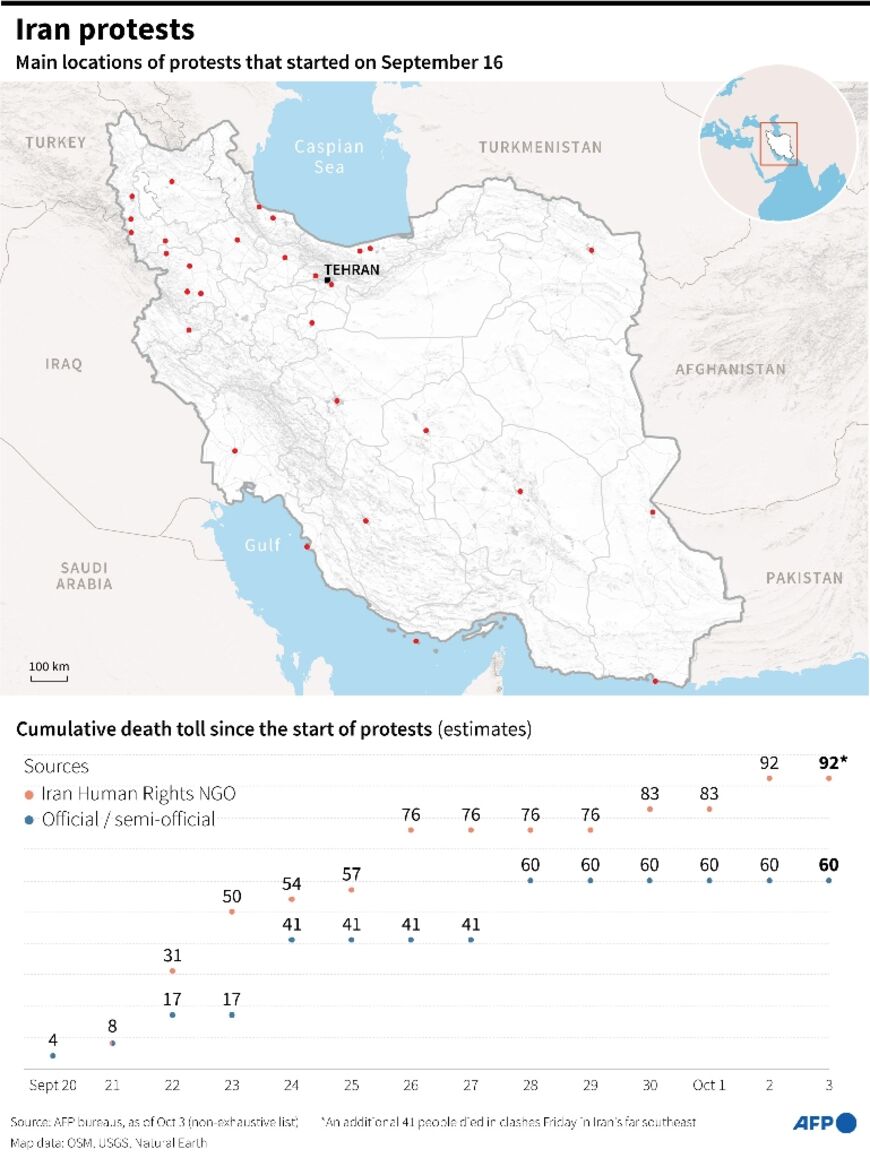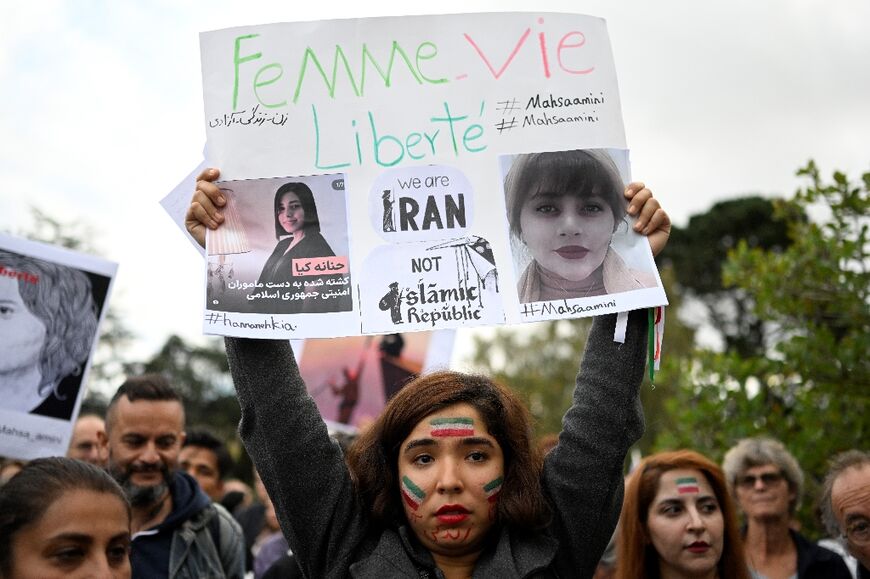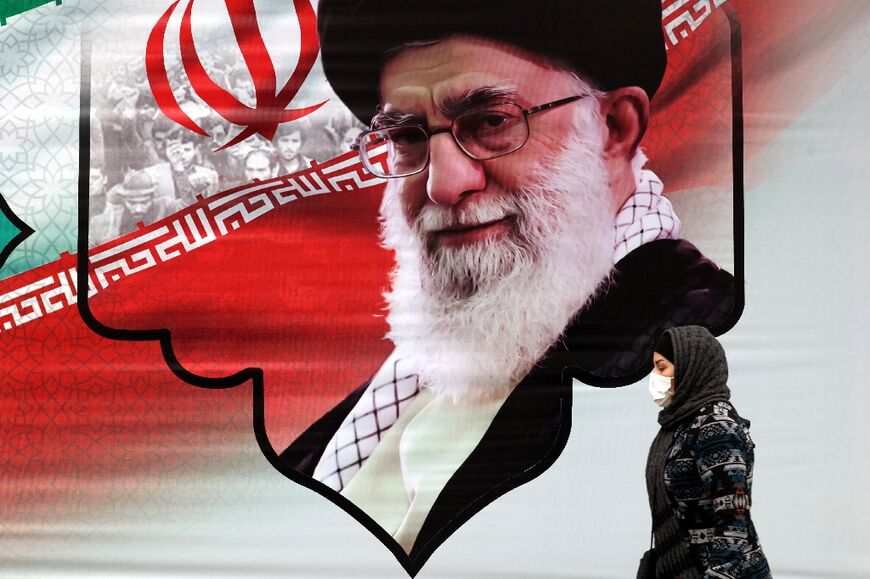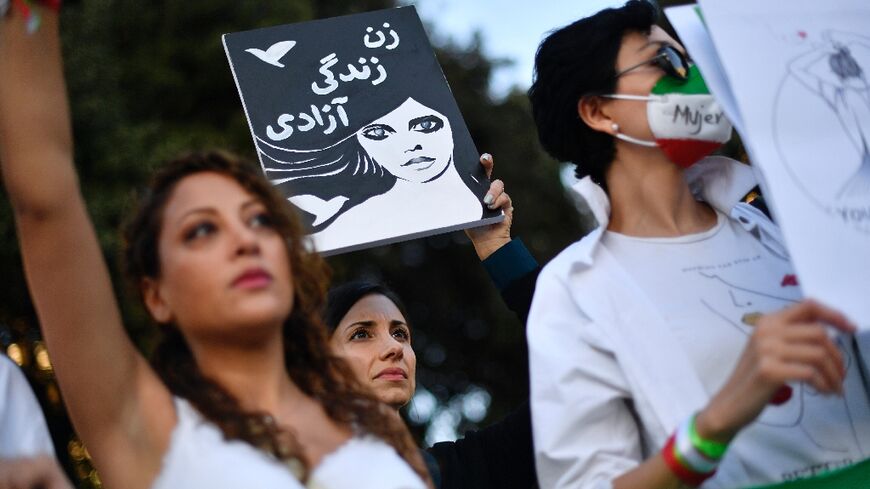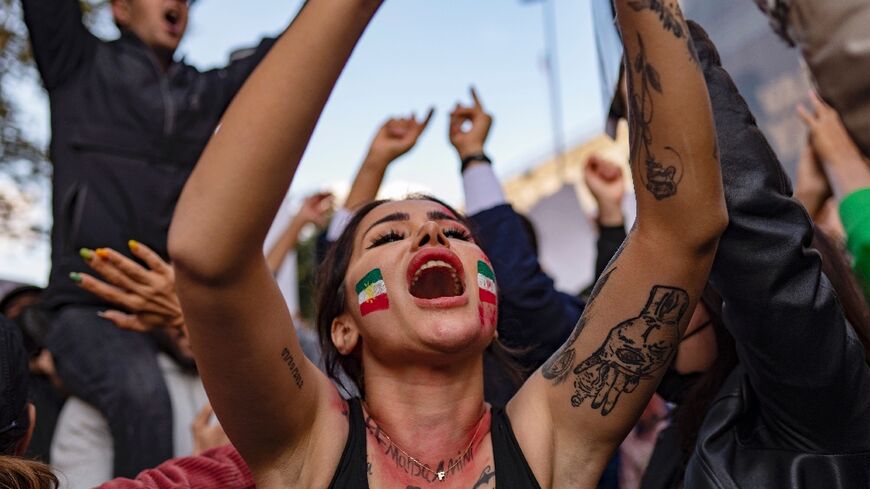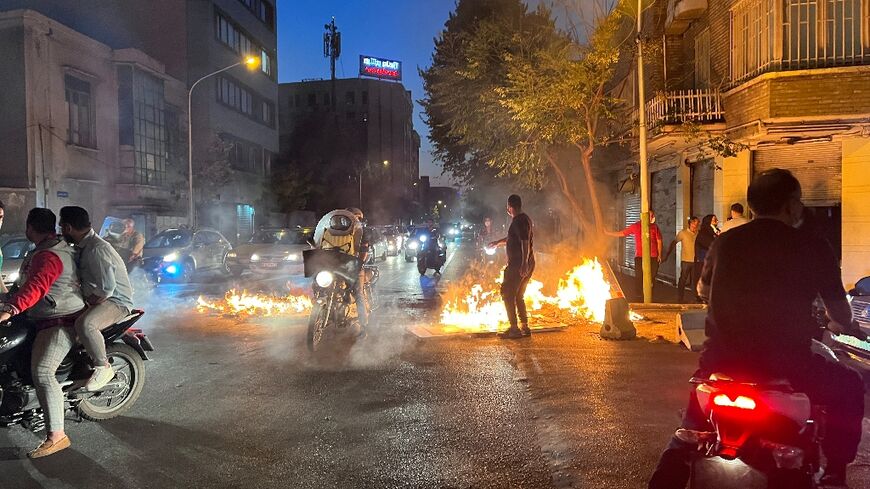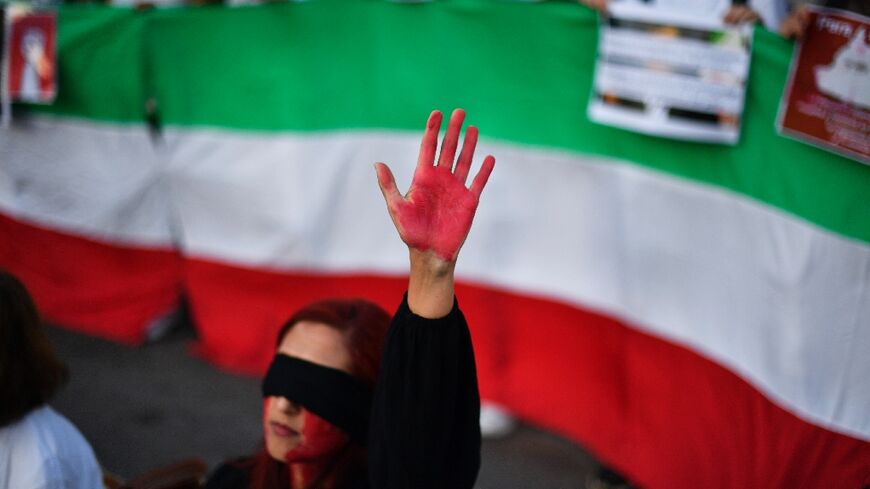Hadis, Minoo and Ghazaleh: the women victims of Iran's crackdown
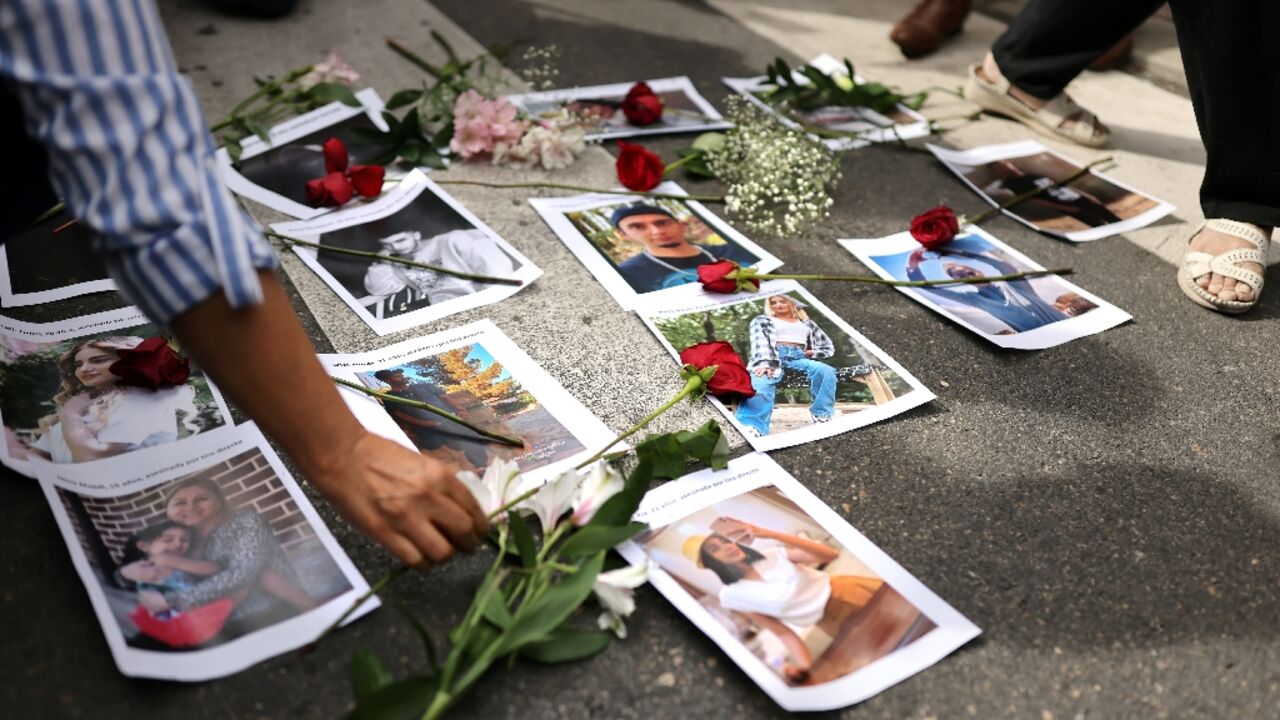
"I am really hoping that in some years from now, after everything has changed, I will be happy to have been involved by taking part in this protest," Iranian woman Hadis Najafi, 22, said in a self-recorded video as she prepared to take to the streets.
Shortly after recording the message to her phone, Najafi was killed while participating in a street protest on September 21 in Karaj, outside Tehran.
According to Amnesty International, she was shot by security forces several times at close range, with birdshot wounds to the face, neck and chest.
Najafi was one of dozens of people who rights groups say have been killed in the Iranian security forces' crack down on protests that erupted over the death of Mahsa Amini in morality police custody.
The protests have broken taboos in Iran, with slogans shouted against the regime and women removing their headscarves. But security forces have hit back with a lethal force that Amnesty says raises concerns of an intent to kill demonstrators.
In a video recorded by her grieving family, Najafi's sister showed the backpack, covered in blood, that was recovered after she was shot.
"It was because of Mahsa Amini that she stood up tall and went out," she said. "We lost Hadis and we are not afraid of anything."
Her distraught mother added: "My daughter was murdered for hijab, for Mahsa Amini. She lost her life for Mahsa. She wanted to keep Mahsa's name alive."
- 'At the forefront' -
Norway-based group Iran Human Rights (IHR) says over 90 people have been killed in the crackdown, including seven women, while Amnesty says it has confirmed 52 names of those killed, including five women, one girl and five boys.
The women killed had no previous experience of political activism and, according to relatives, went to the streets for a movement that they believed offered an unprecedented glimpse of hope.
"Women have been at the forefront of this movement and the very first protest was organised by Kurdish women," Roya Boroumand, executive director of the Washington-based Abdorrahman Boroumand Center, told AFP.
The funeral of Amini, an Iranian Kurd, in her home town of Saqqez in Kurdistan province, was marked by the initial protests as women took off their headscarves in defiance of the Islamic republic's strict dress rules.
"And they (the security forces) have killed with no hesitation. They did not even wait for the movement to get out of control to shoot," Boroumand added.
Minoo Majidi, 62, was killed by a shot fired by security forces during a protest on September 20 in the Kurdish-populated city of Kermanshah in northwestern Iran, according to the Norway-based Hengaw rights group.
In a striking image of defiance, one of Majidi's daughters posed beside her mother's flower-covered grave bare-headed, dressed in black with a white scarf around her neck, according to an image that has gone viral on social media.
Her hair was cropped to the skull and in her left hand she held the long locks of hair she had cut off, an apparent tribute to her mother and Mahsa Amini.
Ghazaleh Chelavi, 32, a keen mountain climber, was shot and killed on September 20 in the northern Caspian Sea city of Amol, according to social media channels, which published harrowing footage of the distress of her family at her funeral.
Hannaneh Kia, 23, was killed the same day in the city of Nowshahr, according to family sources and activists. Amnesty reported that two friends had said she was shot on her way home from a doctor's visit.
- 'They will keep shooting' -
Activists say nearly all the victims died after being shot at close range.
But Sarina Esmailzadeh, aged just 16 and like Hadis Najafi also from Karaj, died as result of blows to the head when security forces beat her with batons on September 23, according to Amnesty.
It also alleged that in a frequently used tactic, Iranian security and intelligence agents have subjected the girl's family to "intense harassment" to coerce them into silence.
Nika Shahkarami went missing on September 20 after heading out to join a protest in Tehran, two weeks before she was due to celebrate her 17th birthday, her aunt Atash Shahkarami wrote on social media.
Her family was finally allowed to see the body on October 1 and were due to bury her in her home city of Khorramabad in Lorestan province on what would have been her 17th birthday, Atash Shahkarami wrote.
But both BBC Persian and Iran Wire reported that the authorities had taken possession of the body and secretly buried it on Monday in another village, to avoid a funeral that could spark a protest.
Meanwhile, Atash Shahkarami was herself arrested, the reports said. She has been inactive on social media since October 2.
"This is not the end. They will keep arresting people and keep shooting as long as people take to the streets. And people have no other venue to express dissent," Boroumand said.


